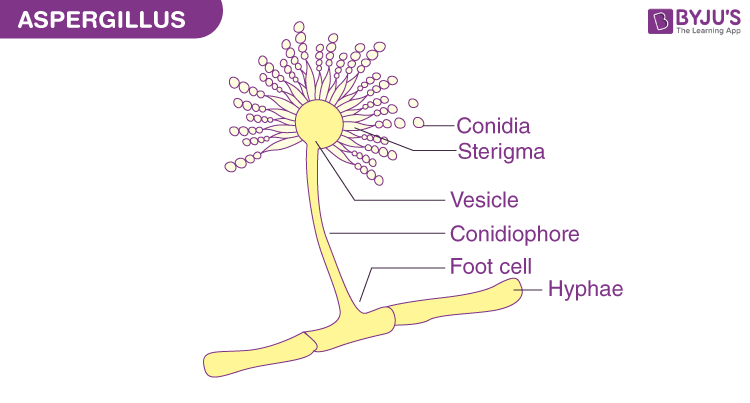Aspergillus is a widespread fungus found almost anywhere (in the air, soil, water, etc.).

Aspergillus features a filamentous structure. The following elements comprise its cell structure:
- Foot cell: The vegetative hyphae are a component of the foot cell. The hypha obtains the nourishment for its growth through the foot cell’s attachment to the substrate. Usually, the foot cell has an L or T shape. It produces the conidiophore as it develops.
- Conidiophore: It is slender, long, and perpendicular to the vegetative hyphae or foot cell. Conidiophore refers to the straight hyphal branch that enlarges at the apex giving rise to the vesicle.
- Vesicle: It has a spherical, elliptical, or club-shaped structure and forms a layer of phialide cells.
- Conidia: They are an exogenous reproductive component developed from sterigmata. The conidia are arranged in chains, with the youngest conidia at the base and the oldest at the top.
- Mycelium: It has a tubular, septate, multinucleated, multicellular, hyaline, and branched structure. It is surrounded by two layers, an outer layer made of chitin and an inner layer made of chitin.
- Cytoplasm: It has a granular appearance and is composed of cytoplasmic bodies like the endoplasmic reticulum, mitochondria, vacuoles, ribosomes, etc.
Related Links:
Visit BYJU’S Biology for more information.